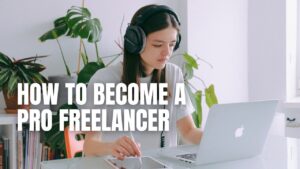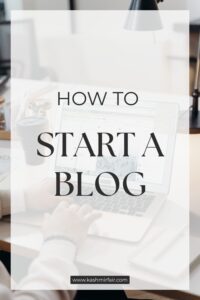What is Digital Art?
Digital art encompasses a wide range of artistic expressions that rely on digital technology as an essential part of their creative process. Here are some key points about digital art:
- Definition:
Digital art refers to any artistic work or practice that uses digital technology as a core component in its creation, manipulation, or presentation. This broad definition encompasses a diverse range of artistic expressions, techniques, and mediums that leverage digital tools, software, or platforms to produce, refine, or display artwork. Below is an expanded exploration of digital art, covering its forms, tools, processes, applications, and cultural significance
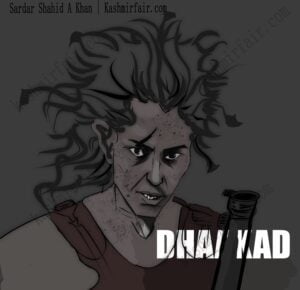
Techniques and Tools:
- Digital Drawing and Painting: Artists use software like Krita (a free and open-source tool) to create digital paintings and illustrations. These tools offer features like layers, brushes, and customizable settings for precise control over the artwork
- Photo Manipulation: Digital artists can manipulate and enhance photographs using software like Adobe Photoshop. They can alter colors, add effects, and create composite images.
- 3D Modeling and Animation: Digital sculptors use software like Blender to create 3D models, animations, and visual effects.
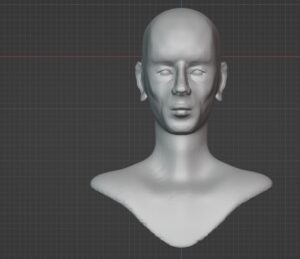
- Generative Art: Some artists use algorithms and code to generate art dynamically, resulting in unique and evolving pieces.
Advantages of Digital Art:
- Undo and Layers: Digital tools allow artists to experiment freely, undo mistakes, and work with layers for better organization.
- Accessibility: Digital art democratizes creativity by making it accessible to a broader audience. Anyone with a computer or tablet can explore their artistic side.
- Versatility: Artists can easily switch between styles, colors, and techniques without wasting physical materials.
Challenges:
Authenticity: Some debate whether digital art can be as authentic as traditional art. However, the distinction is blurring as digital techniques become more sophisticated.
File Formats and Preservation: Choosing the right file format and ensuring long-term preservation can be critical for digital artworks.
Remember, digital art is a dynamic field that continues to evolve, pushing boundaries and inspiring creativity! If you’d like to explore digital art further, consider experimenting with online drawing applications like Sketchpad
The roots of digital art stretch back to the 1960s, when artists like Frieder Nake, the group EAT (Experiments in Art and Technology), and Allan Kaprow explored the relationship between humans and machines. These visionaries envisioned a world of unbounded communication and interconnectedness.
In the early 1980s, artist Harold Cohen, along with a group of engineers, invented a paint program called AARON. Initially creating abstract drawings, AARON evolved over time to imitate shapes from nature, and it’s now considered a harbinger of what we know today as Artificial Intelligence1. Since then, digital art has continued to evolve, embracing various mediums and styles, from digital photography and computer graphics to experimental forms like AI-generated art and AR art.
Digital art has produced numerous iconic pieces across various styles and genres. Here are some notable digital artists and their celebrated works:
- Zim & Zou (France):
Lucie Thomas and Thibault Zimmerman create intricate installations using tangible materials like paper, wood, and thread. Their pieces blend 3D and digital aesthetics, blurring the line between physical and virtual art
- The Rusted Pixel (Ireland):
Paul, known as The Rusted Pixel, is an outstanding 3D designer. His portfolio includes projects for Adobe, Google, Disney, Spotify, and MTV
- Frida Kahlo by Bogena Día:
A digital painting inspired by the iconic Mexican artist Frida Kahlo
- Communication, The Hat by YDK Morimoe (Xhxix):
An intriguing digital artwork that combines symbolism and character design
- Gollum by Igor Komarov:
A captivating depiction of the famous character from J.R.R. Tolkien’s “The Lord of the Rings” series
- Seven Deadly Sins series by Marta Dahlig:
Marta Dahlig’s digital paintings explore themes related to sin and human nature
Creating digital art involves several steps, and I’ll guide you through them:
- Select a Digital Art Software:
Research and choose software that suits your style and goals. Popular options include Adobe Photoshop, Illustrator, Fresco, Procreate, and GIMP
- Sketch Your Design:
Start by sketching your artwork on paper or directly in the software. This initial sketch serves as your foundation.
- Work on Multiple Layers:
Digital art allows you to work with layers. Create separate layers for different elements (e.g., background, characters, details). It provides flexibility and easier adjustments.
- Color Your Drawing:
Add colors to your sketch using brushes, gradients, or color pickers. Experiment with blending modes to achieve desired effects.
- Remove Sketch Layers:
Once you’re satisfied with the colors, hide or delete the initial sketch layers. You’ll be left with the colored version.
- Add Finishing Touches:
Enhance your artwork by adding details, highlights, shadows, and textures. Use various brushes and tools to refine your composition.
- Merge the Layers:
Combine all visible layers into a single layer. This simplifies your file and prepares it for export.
- Save Your Digital Artwork:
Save your masterpiece in a suitable format (e.g., JPEG, PNG, or PSD). You can now share, print, or further edit your digital art
Remember, practice and experimentation are key to improving your digital art skills! 🎨✨
Improving your digital art techniques involves a mix of practice, exploration, and learning. Here are some tips to enhance your skills:
- Experiment with Techniques: Try various drawing techniques to discover what resonates with you. Experiment with brushes, blending modes, and layer effects
- Use a Graphics Tablet:
Invest in a tablet with a stylus for a more natural painting experience. It allows precise control over your strokes and feels like traditional drawing.
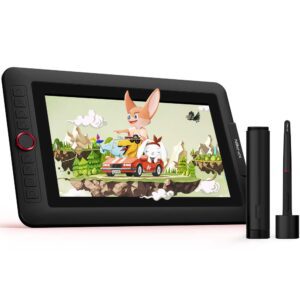
- Practice Regularly:
Like any skill, practice is essential. Dedicate time to create digital art consistently. The more you practice, the better you’ll become
- Explore Color and Textures:
Don’t be afraid to play with color palettes and textures. Experimentation often leads to exciting discoveries
- Leverage Symmetry:
Use symmetry tools to create balanced compositions. Symmetry can add visual interest and harmony to your artwork.
- Be Decisive:
Trust your instincts and make confident decisions. Don’t overthink every stroke; embrace spontaneity
- Seek Feedback:
Share your work with others, whether through online communities or with friends. Constructive feedback helps you grow
Remember, improvement comes with persistence and an open mind. Keep creating, and enjoy the journey! 🎨✨
Certainly! As you delve into advanced digital art, consider mastering the following techniques:
Advanced Layer Management:
Learn to use layers effectively. Complex illustrations benefit from well-organized layers, allowing you to work on specific elements without affecting the entire composition
Detailed Texturing:
Bring your art to life by adding textures. Experiment with brushes and blending modes to create realistic surfaces, whether it’s skin, fabric, or natural elements2
Brush Technique Mastery:
Understand your digital brushes thoroughly. Explore different brush types, settings, and strokes. Brushwork significantly impacts the final look of your artwork
Remember, practice and exploration are key to mastering these advanced techniques! 🎨✨
As beginners in digital art, we all make mistakes and learn from them. Here are 12 common beginner mistakes and solutions for each one:
- Never Knowing Where to Start:
Starting with a blank canvas can be daunting. Have an idea or direction before you begin. Even a rough concept helps you brainstorm and sketch out your artwork.
- Too Much Detail:
Avoid obsessing over every square centimeter. Focus on selling an idea, story, or concept through composition, lighting, and contrast.
- Lack of Value Dynamics and Atmospheric Perspective:
Understand how light affects values (shadows and highlights). Use atmospheric perspective to create depth in your scenes.
- Overusing Pure White:
Pure white can overwhelm viewers. Use it sparingly, especially in highlights.
- Failure to Use Warm and Cold Tones Effectively:
Warm tones (reds, yellows) and cold tones (blues, greens) create mood. Balance them for a harmonious composition.
- Using Only Hard or Soft Brushes:
Experiment with both hard and soft brushes. Each has its purpose: hard for edges, soft for blending.
- Using Too Many Saturated Colors:
Tone down saturation to avoid overwhelming viewers. Subtle colors often work better.
- Getting Stuck on a Brush:
Explore different brushes. Don’t limit yourself to one. Variety adds interest to your art.
- Not Calibrating Your Tablet:
Ensure your tablet responds accurately to your strokes. Calibration matters.
- Lack of Practice:
Regular practice hones your skills. Consistency is key.
- Afraid to Start:
Overcome the fear of the blank canvas. Begin with a concept and dive in.
- Not Paying Attention to Your Health:
Take breaks, stretch, and maintain good posture. Art should be enjoyable, not harmful
Remember, learning from mistakes is part of the artistic journey! 🎨✨
Certainly! Creative burnout is a common challenge for artists, including those in digital art. Here are some strategies to prevent or overcome it:
- Recognize the Signs:
Be aware of physical fatigue, increased irritability, and feelings of dread toward work. Acknowledge these warning signals early.
- Set Boundaries:
- Social Media: Use it consciously. Prioritize platforms that align with your goals and limit usage to avoid burnout
Work Hours: Set clear work hours and stick to them. Avoid overworking or letting work spill into personal time.
- Plan Content:
Organize your creative process. Plan what you’ll work on, set achievable goals, and break tasks into manageable pieces
- Take Breaks: Step away from your art. Go for a walk, watch a TED Talk, or simply rest. Recharge your creativity
- Seek Support:
Connect with fellow artists, join communities, and share experiences. You’re not alone in this journey
Remember, self-care and balance are crucial for maintaining a healthy relationship with your craft! 🎨✨
Creative blocks are periods when reduced creative thinking and productivity occur. Designers, artists, and other creatives face difficulties generating fresh ideas or executing existing ones. These blocks can happen at any project stage and may last for days, weeks, or even months12. To overcome them, consider various approaches like changing your mindset, facing fears, adjusting work habits, and seeking support. 🎨✨
Certainly! Creative blocks can be frustrating, but understanding their causes helps you overcome them. Here are some common triggers:
Perfectionism:
Setting impossibly high standards can hinder creativity. Embrace imperfections and learn from mistakes
Fear of Imperfection:
Worrying that your work won’t be flawless can paralyze creativity. Accept that art doesn’t need to be perfect
Self-Doubt and Negative Self-Talk:
The inner critic can stifle creativity.
Challenge negative thoughts and practice self-compassion
Overworking and Burnout:
Exhaustion drains creativity. Take breaks and prioritize self-care
Fear of Rejection or Failure:
Anxiety about how others perceive your work can block creativity. Remember that growth comes from taking risks
Lack of Inspiration or Ideas:
Feeling stuck with no fresh ideas? Explore new experiences, read, or collaborate with others
Remember, creative blocks are normal, and you can overcome them with patience and strategies! 🎨✨
Creative blocks can be frustrating, but there are effective strategies to overcome them. Here are some approaches:
Forget About the End Result:
Sometimes, starting with the worst solution can help overcome inertia. Just get started, and worry less about perfection
Visually Capture Inspiration:
Create mood boards or style tiles to capture initial thoughts and muses. These visual references keep you creatively stimulated
Embrace Boundaries:
Set narrow parameters for your work, allowing enough room for freedom and play within those boundaries
Experiment with New Techniques:
Trying different techniques and mediums opens up fresh creative possibilities. Step outside your comfort zone
Collaborate with Others:
Engage with fellow artists for new perspectives and ideas. Collaboration fuels creativity
Remember, creative blocks are common, but persistence and exploration lead to breakthroughs
Creative blocks can be frustrating, but there are effective strategies to overcome them. Here are some approaches:
Change Your Environment:
Step outside, visit a new place, or rearrange your workspace. A fresh environment can spark inspiration.
Explore Other Art Forms:
Listen to music, watch films, read books, or visit art galleries. Cross-pollination of ideas often leads to inspiration.
Limit Choices:
Too many options can overwhelm. Set constraints (e.g., color palette, theme) to focus your creativity.
Mind Mapping and Brainstorming:
Jot down ideas, even if they seem unrelated. Mind maps help connect dots and generate new concepts.
Learn New Techniques:Take online courses or tutorials. Learning something new can reignite your passion.
Remember, inspiration can strike unexpectedly, so stay open and curious!
Routines and rituals play a significant role in an artist’s creative process. Let’s explore how they contribute:
Consistency: Establishing routines helps artists maintain a consistent practice. Regularity fosters productivity and progress
Efficiency: Systems and routines streamline work. By automating certain tasks, artists can focus more on creating
Focus: Rituals create mental cues. When you follow a specific routine, your mind knows it’s time to switch into creative mode
Creativity: Having structured routines frees mental space. It allows artists to channel their energy into the act of making art
Accountability: Routines hold artists accountable. They provide a framework for achieving artistic goals
Remember, finding a balance between structure and spontaneity is key! 🎨✨
Mindfulness practices play a vital role in enhancing an artist’s creative journey. Here’s how they intersect
Present-Moment Awareness:
Mindfulness encourages being fully present, free from distraction or judgment. Artists who cultivate this awareness connect more deeply with their creative process
Art as a Medium for Mindfulness:
Throughout history, art has been intertwined with mindfulness. Engaging with art stimulates emotions, memories, and inner exploration
Forms of Mindful Art:
Whether it’s painting, dance, or writing poetry, each artistic form allows us to connect with the present moment uniquely
Interactive Art Exercises:
Guided painting or pottery making can be meditative, emphasizing the process over the outcome
Mindful Observation of Art:
Intentionally observing art deepens appreciation and cultivates mindfulness
Mindfulness Through the Artist’s Lens:
Interviews with artists reveal a profound connection between mindfulness, mental well-being, and artistic expression
Remember, mindfulness enriches both the artist’s inner world and their creative expressions! 🎨✨


